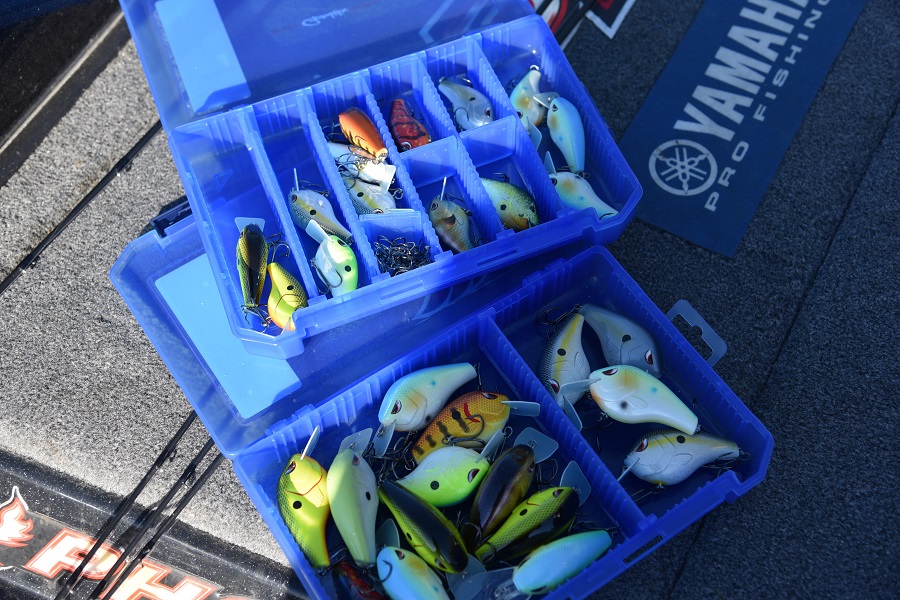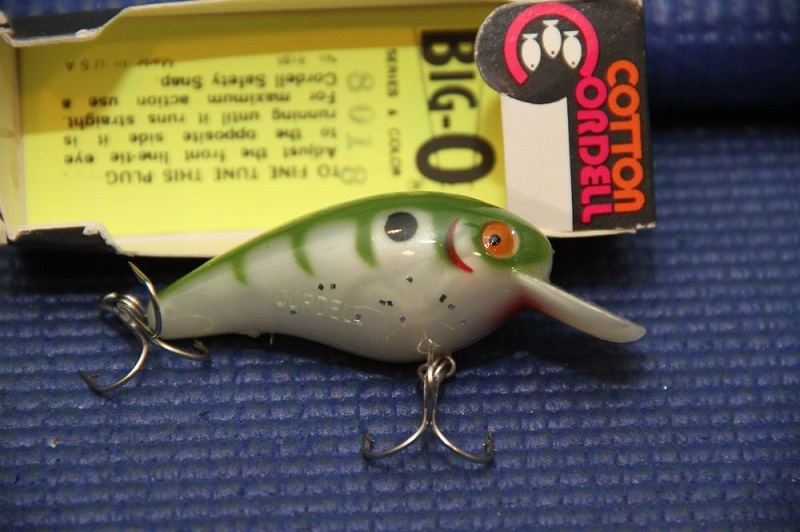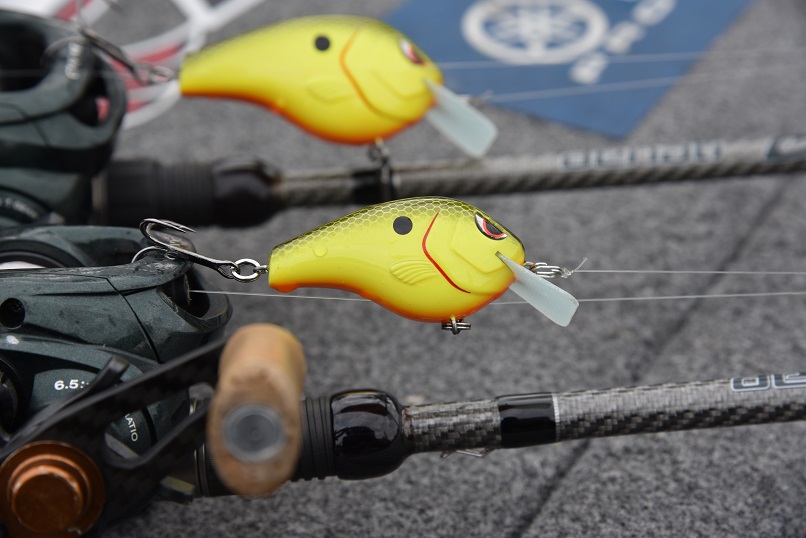
Many, many years ago, too many that I would like to claim, I spent countless nights in my cold basement bedroom pouring over a catalog that came from a company out of Sidney, Nebraska that had a full selection of fishing baits along with hunting clothing and I think it had a few fishing flies and fly rods as well.
That was before the days Bass Pro Shops hit the market.
 THE BIG O
THE BIG O
I would spend a lot of time pouring over what lures to put in my tackle box. Hula Poppers, Jitterbugs, and Shannon Twin Spins were a few baits that were automatics to put into the box, but there was also a bait that made the list every year Cotton Cordell’s Big O.
A short, fat bait built with a small bill, but along with that bait came a big reputation of catching bass. The Big O had a dedicated following; but eventually fell out of grace with fishermen and you also could say disappeared from the market.
But in the dark corners of bass fishing, there were fishermen still using the Big O on a regular basis, and doing well with it. They kept the goods days with the Big O a secret, so as not to attract attention to it.
That all changed about five years ago when the squarebill was reintroduced to the bass fishing market.
Now, every hard bait company has a squarebill bait to offer bass fishermen and the squarebill’s success has sky rocketed in this small amount of time.
Let’s take a closer look at today’s squarebill, how it fits in to today’s bass fishing and how you can make it a bait to turn to when the time is right.
Just a note here that catalog I was referring to was from Cabela’s in the early days when Cabela’s was just a catalog order company.
Please let me make this statement right off the bat, squarebill crankbaits are today’s bass fishermen’s spinnerbait.
SQUAREBILL HUNTING ACTION
What fishermen used to do with a spinnerbait, they are now turning towards a squarebill to do. Squarebills are made to cover the water depth of 3- to 5-feet.
So, what makes a good squarebill? The bait has to run steady and be able to deflect off of the cover, not getting hooked up, resulting in a wasted cast. The key that sets apart a good squarebill from a great squarebill is a bait has a built with a hunting action. Hunting action means that the bait will track off course, but will correct itself and come back in line again as you reel.
SLOW RISE ON THE PAUSE FOR A SQUAREBILL
One other characteristic that a great squarebill has to have is a slow rise on a stop.
Picture this…
You run the bait into the cover and with a rip of the rod tip you break your squarebill free from the cover. You pause and the bait slowly starts to rise above the weeds. STRIKE!
I cannot tell you how many bass I have caught doing just this tactic.
Three true squarebills that I carry are the Spro’s Fat Papa Squarebills 50 & 70, Spro’s Fat Little John 55 & 60 and Strike Kings KVD 1.5 & 2.5.
I think these baits have the best action in the water and have both of the characteristics that I explained.
ROD AND REEL FOR SQUAREBILLS
Just like all crankbaits, squarebill fishing is a segment of its own.
Pick the appropriate baits to match the conditions that you are fishing. The 1.5 baits hit depths of 2- to 4-feet depths, 2.5 baits hit depths of 4- to 6-feet.
When it comes to rods, I generally have two rods setup ready to go for fishing squares. I use a rod that is 7’6” MH action, when I am working flat areas or when I will be making long casts. My other rod setup in a 7’ MH action rod. I use this when I am picking cover apart and making close casts to targets in front of me.
When it comes to reels I try to keep my speed in two ranges, one reel at 5:1 gear ratio and another at 6:1 gear ratio. I will use the 5:1 reel when I am fishing in colder water during the spring and fall periods, but this is also gauged by how active the bass are each day. On days when the bass are active and I do not have to worry about speed of my bait, I will use a 6:1 ratio reel. The more casts I can get in, the more chances I have to catch fish.
SQUAREBILL LINE SIZE FOR ACTION AND DEPTH
Line choice can cover the spectrum, let me explain what I mean. My rule of thumb is 10- to 12-pound Sunline Crank as my mainline of choice; but I will adjust my line size according to the conditions that I am fishing.
Let’s say I am fishing a squarebill, targeting bass holding in weeds in 5- to 6-feet of water, I may respool and use a bigger line to keep the bait out of the weeds. I could go with a 16-pound-test to act as a depth limiter. The 16-pound line will limit the depth that my bait can reach to about 4-feet. This will allow me to fish my square more efficiently, by not getting the bait fouled into the weeds or cover.
If I am fishing a bite that has the bass somewhat shut off, I will grab my rod that is spooled with 10-pound-test. By picking a 10-pound line, I am not using my line to limit the depth and the lighter line will enhance the action of the bait.
So, in a nut shell if you are looking to get more depth and action out of your squarebill. pick a lower pound test line. If you are looking to limit the depth that you are fishing or the action of the squarebill, spool up with a bigger test.
Just like any crankbait it is your goal to have your bait make contact with as much cover as you can when you are working your squarebill back to the boat. If you are not making contact with the cover you are fishing, you will not get as many bites. Make the line adjustment to make proper contact.
MORE TIPS FOR FISHING SQUAREBILLS FOR BASS
A few more key notes when it comes to squarebills.
#1 Make sure your hooks are sharp. If you have been fishing on shallow rocks, give your hooks some love. Check your hooks a few times during your day of fishing and take the time to re-sharpen your hooks if they are dull.
#2 When it comes to colors try to match what the bass are feeding on – shad, craws, and a couple of what I will call loud colors (black and chart, crawfish red) will do. These colors will cover your bases in clear and dirty water conditions all season long.
#3 Do not lose confidence in a squarebill. If you are making it deflect off the cover, weeds or rocks, you WILL get bites. The true key to triggering strikes is making contact with the cover
So, the next time to are on the water make sure you have a squarebill tied onto the end of your cranking rod. Match the conditions and bites that you are getting to your tactics and equipment. If you are not making contact with the cover you need to make the proper adjustments. I hope these squarebill tactics help you put more bass over the side of your boat this season.



 Advertising
Advertising